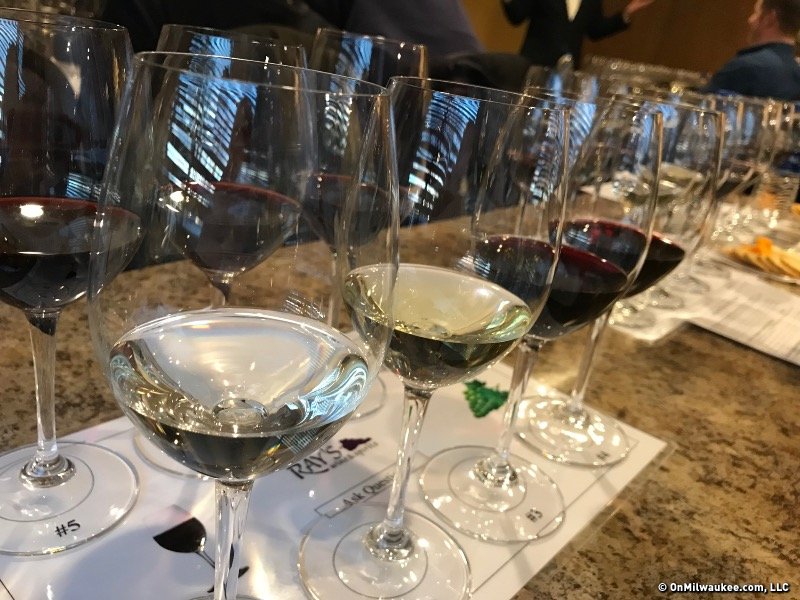It all used to be so simple. If you were eating red meat for dinner, you were to drink red wine; if you were doing fish or poultry, go with white.
These days, it's all but impossible to adhere to steadfast rules when dealing with such a wide range of complex, multi-ethnic dinner options, and as a result the rules have changed. That is to say, there are no real rules, but rather educated suggestions for matching meals with libations that will enhance the entire experience rather than mute or muddle certain flavors.
It's in no way an exact science. Nate Norfolk of Purple Feet Wines, a wine wholesaler that distributes to retail outlets, all the Bartolotta Group restaurants, as well as Dream Dance, Izumi's and several local bars like Burnhearts and Lulu, has been working with wine for about a decade and has a pretty good rule of thumb.
"Sometimes it's a lot easier to be deductive when it comes to paring wine, meaning that instead of thinking about what would be the ultimate pairing, really what you want to avoid is what would be horrible together," he says. "It's not about striving for perfection, it's about avoiding a train wreck."
A train wreck, he says, would be chocolate cake and New Zealand sauvignon blanc, which is typically high in acidity and has very overt citrus flavors, like grapefruit, and smells a little like hay or green grass.
He does, however, recommend that wine with a Caprese salad or a dish served with raw tomatoes, a pairing in which the acidity of the wine and the acidity of the food mirror each other.
"If you pair an acidic meal with something like a rich chardonnay, then the food is so much stronger than the wine and the wine can't fight back."
Toni Johnson is the wine director for Lake Park Bistro and is the only person in Wisconsin to have passed the advanced certification at the international sommelier organization, Court of Master Sommeliers. When pairing wines with Lake Park Bistro's twice monthly Menu de Chef, she says she tries to match the body and texture of the food to the body and texture of the wine.
In summer, this means mixing seafood with light, vibrant wines like riesling, pinot grigio and sparking rose. Now in the fall with lots of garlic, lentils and fava beans on the Bistro's menu, she's going with heavier wines, and both red and whites fall into this category. Pinot noir, chardonnay, cabernet and sauvignon blanc, depending where it's made, are all textured wines that work well.
But, it's not always about complementing
Of course, it's somewhat subjective, yet there are a lot of food and wine combinations that make a lot of sense and they're pretty basic in theory.
There are primarily two ways to go about pairing wine and food. One is to match a wine with the flavors that are already in a food, such as pairing pasta with a tomato sauce that is full of basil, oregano and black pepper, with an acidic, spicy wine like a shiraz.
There's also the concept of creating a contrast. If you have prominent savory or salty flavors, you want to find a softer, fruitier wine that will contrast those flavors and maybe tone them down.
"The most classic pairing I can think of is port wine and blue cheese," says Norfolk. "One of the reasons it works is, you have the saltiness of the cheese and then you have this sweet wine that has dried fruit flavors. The fruitiness of the wine tones down the saltiness of the cheese and the savory flavors of the cheese tone down the explicit sweetness of the wine and just brings out the fruitiness of it. They harmonize each other and they work in a way that brings out contrasts."
Norfolk's personal ultimate combo? Champagne and sushi.
"To me, that's it," he says. "And I think that pairing works because sushi rice has vinegar in it and champagne, if it's dry, has great acidity to it, which complements the vinegar. The bubbles are constantly refreshing your palate every time you take a sip -- it serves the same roll as the ginger."
Johnson agrees.
"Sparkling wines go great with so many foods, it's very versatile," she says. "I don't really pair it with desserts, though, because I think the wine has to be sweeter than the food you're eating for that to work. But with other courses it cleanses the palate and is a great way to start a meal."
Tips of the trade
- If you're interested in wine and food, find a place where you can form a relationship with the people working there who can help you.
- Try to remember two things about the wines you've tried and liked: Where are they from and what grapes are they made from. The wines from a specific region are going to have common attributes to other wines from that area and you can make better-informed decisions as a consumer.
- Norfolk's insider tip: Anything with which you'd normally have beer, you can also have a dry riesling or a dry sparking wine (Think Mexican food, fish dishes, sushi).
- Johnson's insider tip: Drink what you like! "One thing I always tell our guests is drink what you like and don't be afraid to drink something that isn't bone dry in a fancy French restaurant. People think they're not being sophisticated if they are drinking off-dry or middle wines, but a hint of sweetness can really bring out so many wonderful elements of food."
Avoiding the train wreck
Here are a few good pairing suggestions from the experts.
Whites
- Chardonnay: The rich buttery flavor of Chardonnay complements seafood with butter sauce and rich cream sauces over pasta.
- Gewurztraminer: "Gewurz" means spice in German, so this wine is best paired with spicy dishes dealing with hot chilies, ginger, pepper and cilantro, as well as German food like sauerkraut.
- Riesling: As Norfolk mentioned, a dry Riesling goes well with food you'd typical drink a beer with, such as Mexican foods, chicken dishes, and works well with fish and sushi.
- Sauvignon blanc: This one's good for your classic holiday turkey meal, vinaigrette salads, oysters and salmon and even sweet desserts.
Reds
- Californian Red Zinfandel: Spicy red wines go great with Mexican, vegetable dishes and dense meats.
- Carmenere: This Chilean wine can really handle cumin, so is great matched with Mexican, Thai, Vietnamese and India cuisines.
- Pinot noir: Pinot noir is a complex wine, so it works best paired with simpler foods, such as portobello mushrooms, triple cream cheeses, gouda and goat cheese.
- Shiraz: It's a peppery wine that can stand up to a lot, so go for it with ribs, burgers, barbequed and garlicy foods and chili.
OnMilwaukee.com staff writer Julie Lawrence grew up in Wauwatosa and has lived her whole life in the Milwaukee area.
As any “word nerd” can attest, you never know when inspiration will strike, so from a very early age Julie has rarely been seen sans pen and little notebook. At the University of Wisconsin-Milwaukee it seemed only natural that she major in journalism. When OnMilwaukee.com offered her an avenue to combine her writing and the city she knows and loves in late 2004, she knew it was meant to be. Around the office, she answers to a plethora of nicknames, including “Lar,” (short for “Larry,” which is short for “Lawrence”) as well as the mysteriously-sourced “Bill Murray.”




.jpeg)


